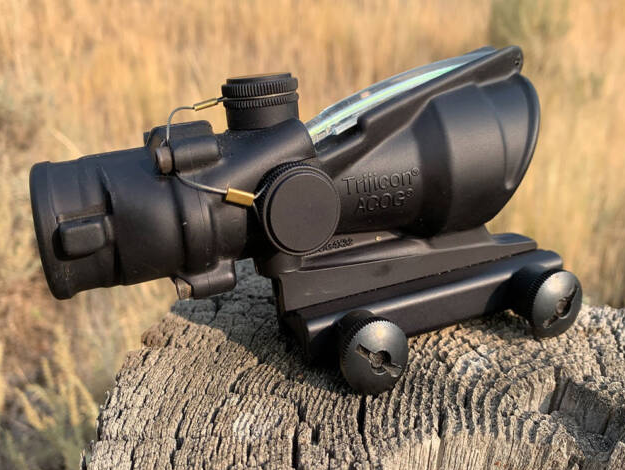Buy Used Optics with Confidence: 17 Expert Tips for Smart Buyers

Why Buying Used Optics Makes Sense
For outdoor enthusiasts, hunters, tactical professionals, and competitive shooters, investing in optics is a must. But brand-new scopes or binoculars often come with high price tags. That’s where the used optics market steps in—and you can absolutely buy used optics with confidence if you know what to look for.
Cost Savings and Value
Used optics often provide the same performance as new gear but at a fraction of the price. Whether it’s a high-end riflescope or a tactical red dot sight, many used products have barely been touched, yet they’re marked down significantly.
- Save 20% to 50% or more compared to new prices
- Get more features for less—like premium glass or illuminated reticles
- Avoid high depreciation that new optics face upon purchase
Access to Discontinued or Premium Models
Many optics fans search for discontinued models with cult followings or specific reticle designs that aren’t made anymore. Buying used is often the only way to get your hands on such gems. It’s also a chance to try top-tier optics without top-tier pricing.
Types of Used Optics You Can Buy
Rifle Scopes, Red Dots, Binoculars
Used optics come in a wide range of types:
- Rifle scopes – For hunting, long-range, or tactical applications
- Red dot sights – Great for rapid target acquisition and home defense
- Binoculars – Perfect for wildlife watching, hiking, or sporting events
Each has different considerations when buying secondhand—but all offer solid value if inspected properly.
Tactical Optics and Night Vision Devices
Advanced users may also shop for:
- Thermal imagers
- Night vision scopes
- Prism sights
- LPVOs (Low Power Variable Optics)
With such gear, functionality checks become even more critical.
Where to Buy Used Optics
Dealers and Retailers vs Individual Sellers
Reputable optics dealers like RK Barmory specialize in buying and selling quality used optics. Their expertise means products are inspected, described honestly, and often come with return policies—giving you more peace of mind.
Buying from individual sellers might yield better deals but carries higher risk. You’ll need to verify everything yourself.
Online Marketplaces and Forums
Popular options include:
- RK Barmory’s online store
- Gun-specific forums like AR15.com or Sniper’s Hide
- eBay, Reddit Gear Swap (with caution)
- Facebook marketplace (check legality and seller history)
Stick with platforms that offer buyer protection or allow direct communication with sellers.
Understanding Optics Specifications
Magnification, Eye Relief, Reticle, Durability
Before you click “buy,” brush up on key terms:
- Magnification: 1-6x vs. 3-18x—know what suits your purpose
- Eye relief: Important for comfort and safety with high-recoil guns
- Reticle type: Duplex, BDC, Mil-dot, illuminated—each has pros and cons
- Build quality: Aircraft-grade aluminum, sealed construction, shockproofing
Lens Coating, Parallax, Field of View
- Coatings: Multi-coated lenses increase light transmission
- Parallax adjustment: Crucial for precision shooters
- Field of view: Wider views help track moving targets
Reading specs helps you match the optic to your firearm and mission.
Inspecting a Used Scope: What to Look For
Physical Condition: Scratches, Dents, Rust
Start with the exterior:
- Inspect for major dings or dents
- Watch for stripped screws or damaged mounts
- Check for signs of water damage or corrosion
Look closely at adjustment knobs, tube body, and turret caps.
Optics Quality: Clarity, Fog, Light Leak
Examine the lenses:
- Look for scratches, cloudiness, or internal fogging
- Shine a light through both ends to check for cracks or debris
- Twist the zoom ring and turrets—should feel smooth and firm
A little wear is expected. Internal damage? That’s a dealbreaker.
Verifying Functionality Before Buying
Turrets, Focus, Parallax Adjustment
To buy used optics with confidence, it’s essential to check how well the internal mechanisms operate. Here’s a quick checklist:
- Turrets: Should turn smoothly with audible clicks and return to zero properly. Mushy or loose turrets are red flags.
- Focus ring: Adjust it across ranges—there shouldn’t be grinding or sticking.
- Parallax dial: For precision scopes, test across distances. A failed adjustment mechanism affects long-range accuracy.
Zoom, Locking Mechanisms, Mount Compatibility
Other things to examine:
- Zoom function: Should rotate evenly and lock in place (if applicable).
- Illumination controls: If the optic has lit reticles, test the brightness levels.
- Mount compatibility: Make sure it’s compatible with your rail system—Picatinny, Weaver, or Dovetail.
Always test the optic under conditions that simulate real-world use.
Warranty and Return Policies
Dealer vs Manufacturer Coverage
Some optics manufacturers offer lifetime warranties—but be warned: these are often non-transferable. That’s why working with a professional dealer like RK Barmory matters. They often provide their own limited warranty or return period.
- Dealer warranty: May include 30-day returns or testing windows
- Manufacturer warranty: Only valid if clearly transferable—check the fine print
Importance of Testing Period
Always aim to buy from sellers offering at least a short return window. This allows you to test the optic under field conditions and ensure it meets your needs. If a seller refuses any return policy—be cautious.
Pricing Strategy for Secondhand Optics
Market Prices, Depreciation, Model Rarity
Used optics pricing is typically based on:
- Original MSRP
- Current condition
- Rarity or discontinuation
- Popularity of the model
Scopes like the Vortex Viper PST or Leupold VX-3 tend to retain more value due to demand.
Negotiation Tips
Don’t be afraid to negotiate—especially with individual sellers:
- Use comps: Reference similar listings
- Offer fair prices: Lowballing often gets ignored
- Bundle accessories: Ask if mounts, sunshades, or boxes are included
How to Buy Used Optics with Confidence Online
Seller Feedback and Verification
When buying online, vet the seller like a pro:
- Look at their feedback rating or forum history
- Ask for references or previous sales
- Search for their username or email on forums for reviews
Requesting Photos and Test Videos
Always request clear, high-resolution photos:
- Front and rear lenses
- Turrets and serial number
- Any blemishes or wear marks
Even better—ask for a quick video of zoom, reticle illumination, or turret clicks.
Shipping, Insurance, and Handling
Secure Packaging Tips
A lot can go wrong in shipping if optics aren’t packed correctly. Here’s what to look for:
- Double boxing
- Foam or bubble wrap padding
- Lens caps installed
Insurance Options and Tracking
Request insured shipping and get a tracking number. For expensive optics, this is a must. A lost or damaged scope without insurance could mean a total loss.
Sell Your Used Scopes: When It’s Time to Upgrade
Determining Resale Value
Just like buying, knowing how to sell your used scopes at the right price is key. Start by evaluating:
- Current market demand for your optic’s brand/model
- Cosmetic and functional condition
- Original accessories and packaging
You can often get 60% to 80% of the original price if the item is well-maintained. Popular models from Vortex, Leupold, and Trijicon hold value best.
Listing Tips and Platforms
To reach the right buyers:
- Use clear, detailed listings with multiple photos
- Be honest about any wear or issues
- List on platforms like RK Barmory’s Sell Your Optic page, GunBroker, or optics-specific forums
Tip: Include original paperwork or proof of authenticity if available—it boosts buyer confidence.
Legal Considerations and Export Rules
Local Laws, Import Restrictions
Some optics, especially night vision or thermal devices, are subject to strict regulations. Before you buy or sell:
- Check local and federal laws (especially for tactical optics)
- Verify that the optic isn’t ITAR-restricted (International Traffic in Arms Regulations)
- Don’t ship internationally without confirming it’s legal
Serial Number Verification
Inspect and record the optic’s serial number. Make sure it hasn’t been tampered with, removed, or altered. This protects both buyers and sellers from fraud or stolen goods.
Common Pitfalls and How to Avoid Scams
Misleading Descriptions, Fake Photos
Unfortunately, scams do exist. Watch out for:
- Overly vague listings
- Blurry or reused photos
- Unrealistically low prices
If it sounds too good to be true—it usually is. Always ask questions and verify the seller’s reputation.
Lowball Offers and No-Return Sales
Buyers: Avoid sellers who refuse any form of return or have a no-questions-asked policy.
Sellers: Be wary of buyers who offer half your asking price immediately—especially with vague usernames or no feedback.
Tips from Experts: What Manufacturers Won’t Tell You
Wear Patterns and Usage Clues
Learn to read signs of wear:
- Turrets with worn markings indicate heavy adjustment use
- Discolored lenses may hint at poor storage conditions
- Sticky zoom rings could mean internal lubricant breakdown
Internal Inspection Practices
Use a flashlight to:
- Look inside the optic for haze, debris, or fungal growth
- Check reticle alignment and function under different lighting
- Inspect for fogging when transitioning from hot to cold environments
Buyer Maintenance Tips After Purchase
Cleaning and Storage Best Practices
Once you’ve scored a great used optic:
- Clean lenses with a proper microfiber cloth and optics-safe fluid
- Store in a dry, padded case when not mounted
- Use desiccants in cases to reduce humidity and fog risk
Regular Checks and Zeroing
Don’t assume your used optic is zeroed. After mounting:
- Re-zero using a trusted method (bore sight, range time)
- Test at various distances
- Monitor for any shift over time
This helps you spot internal issues before they become major problems.
FAQs About Buying Used Optics
1. Is it safe to buy used optics online?
Yes—if you do your research, verify sellers, and use protected platforms like RK Barmory.
2. How can I tell if a used scope is damaged inside?
Use light inspection, check turret response, and verify image clarity across zoom ranges.
3. Should I worry about fake optics?
Definitely. Stick to reputable dealers and avoid prices that are drastically below market value.
4. What’s the return policy when buying from an individual?
Usually none—unless clearly stated. That’s why dealer-backed platforms are safer.
5. Do all optics come with transferable warranties?
No. Many brands don’t offer warranties on used products unless purchased directly or through authorized resellers.
6. How do I sell my optic safely?
Use secure payment methods, describe the item accurately, and ship with insurance.
Conclusion: Shop Smart, Buy Used Optics with Confidence
The pre-owned optics market is rich with opportunity—but only if you know how to navigate it. Whether you’re looking to save money, score a rare model, or upgrade gear, the key is simple: buy used optics with confidence by doing your homework.
Trust reputable dealers like RK Barmory and explore their platform to sell your used scopes or find reliable gear backed by industry expertise.
In the end, it’s not about settling—it’s about being smart, selective, and savvy.





